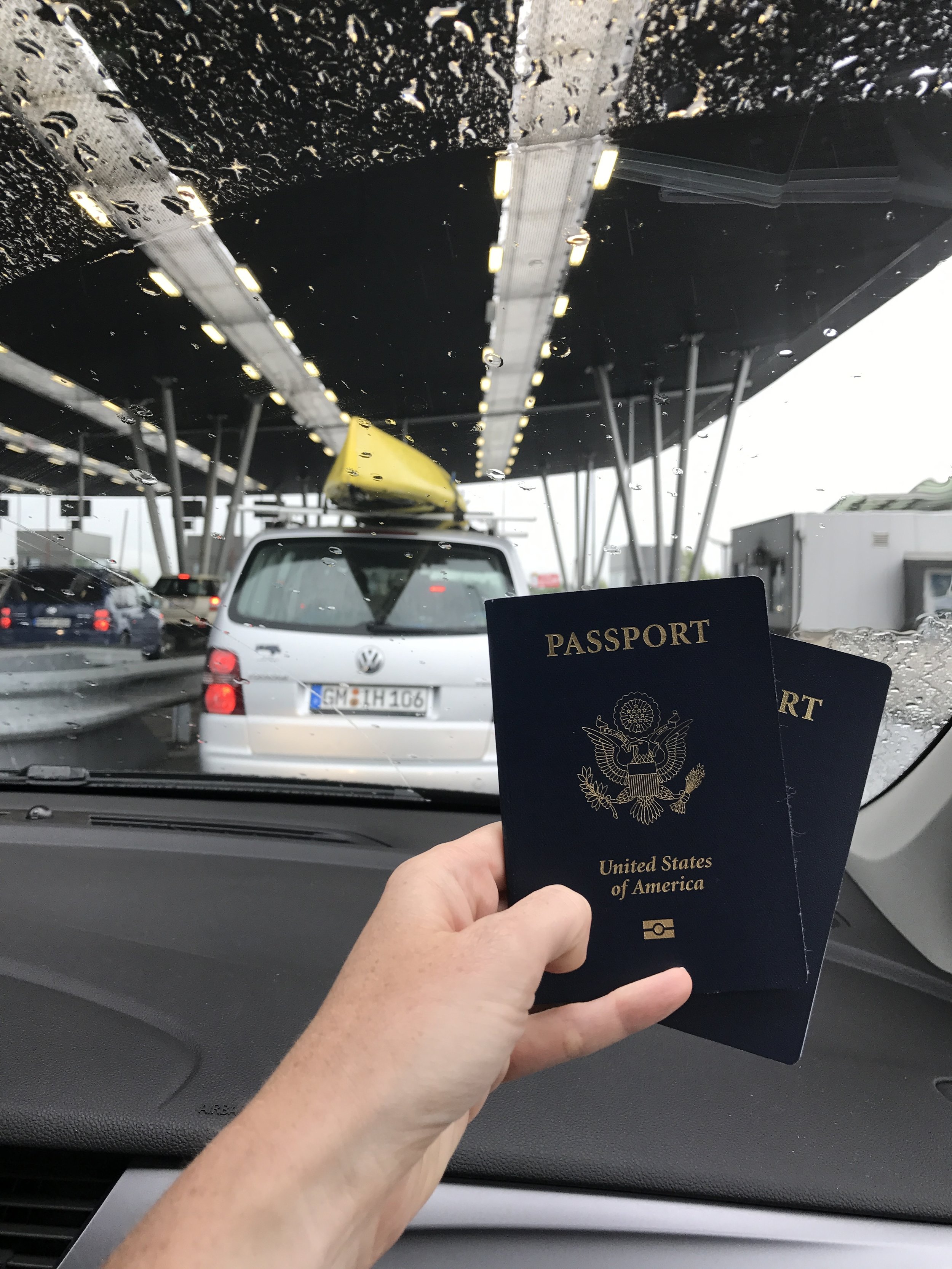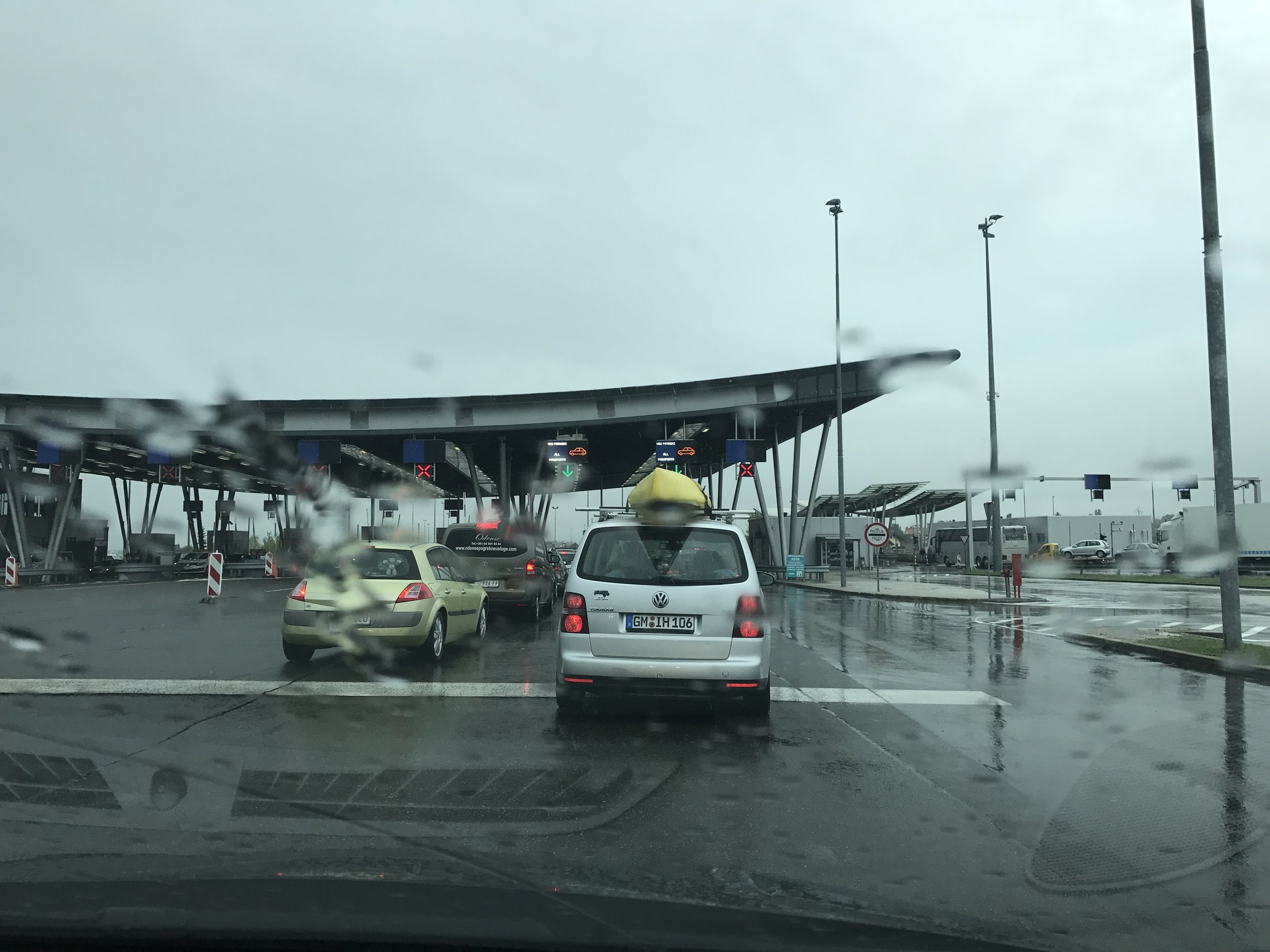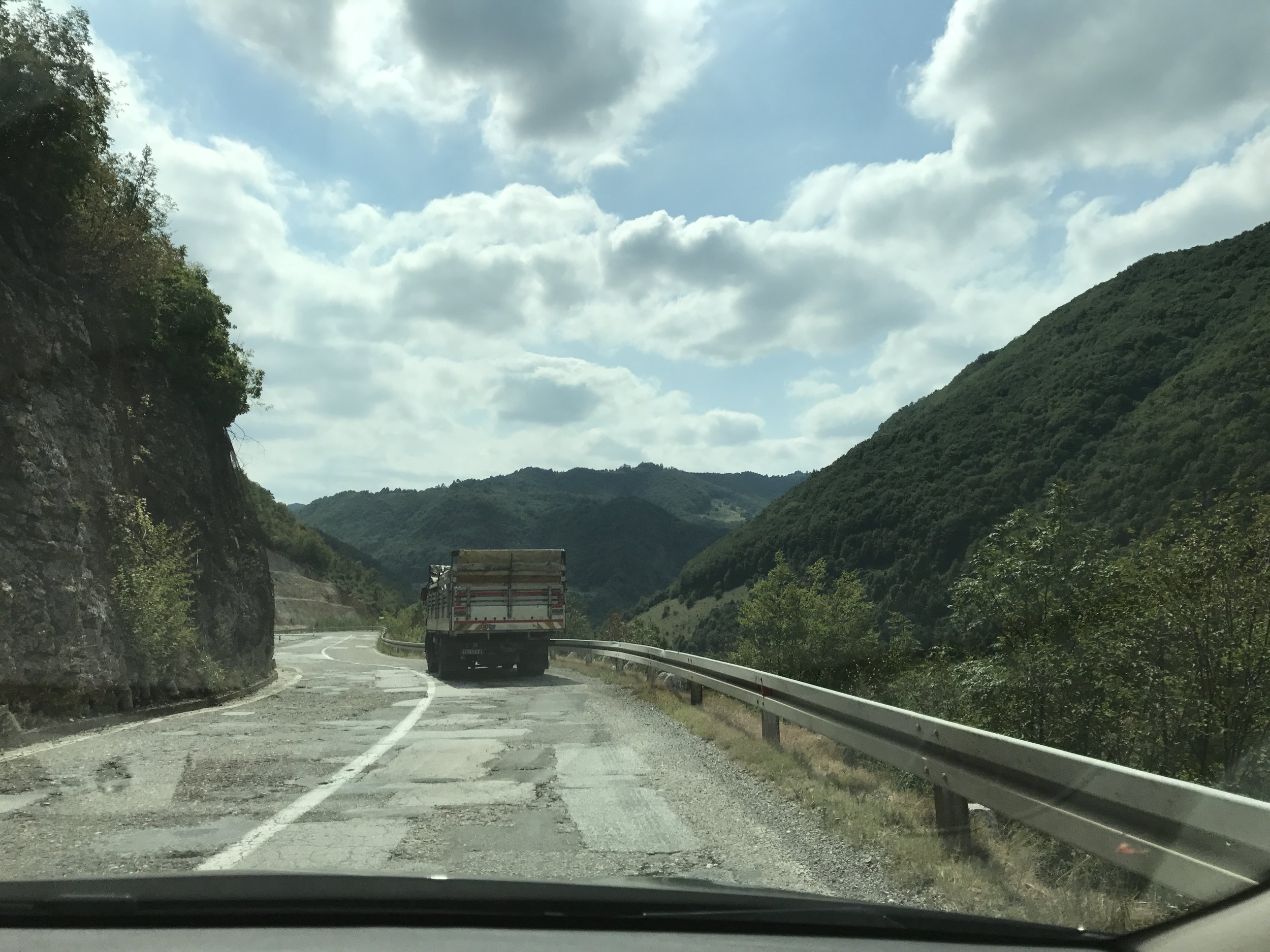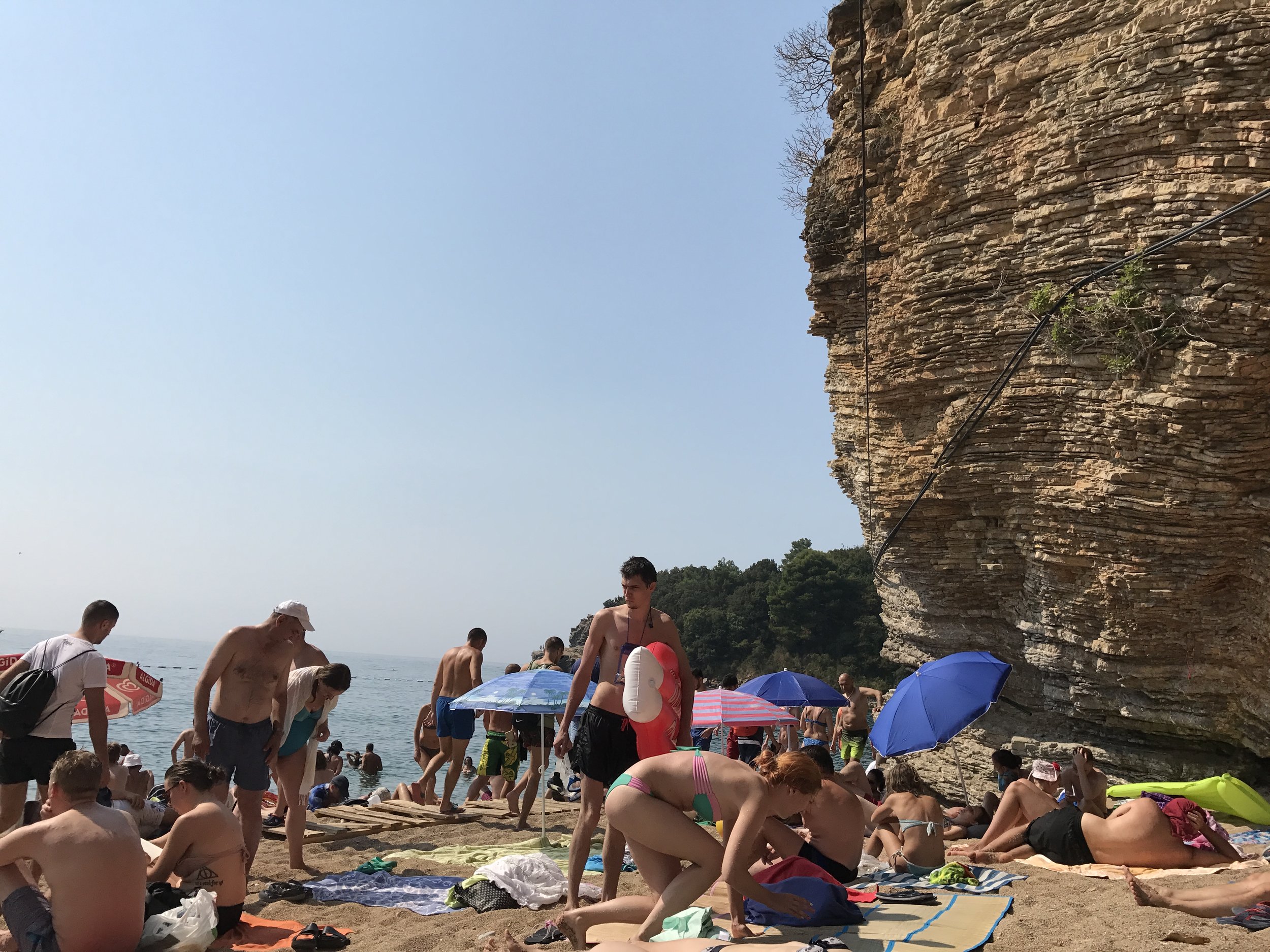A Month Long Road Trip in the Balkans | Stories & Logistics
Our road trip was in August & September of 2017.
I have a somewhat irrational fear of driving. Or, should I say being in a vehicle. So, the idea of renting a car to drive around the Balkans, where we knew little of the road conditions and language, was not my first choice. But, with the lack of trains and limitations of bus transportation, renting a car is definitely the best way to see this part of the world. So, after several hours of research we decided that in order to get the most out of our time in Bosnia, Serbia, Montenegro, Croatia, and Slovenia a car was the way to go.
With most reviews, the bad ones tend to surface, so reading up on the road conditions, border crossings, and police before embarking on our road trip made the first few days of driving both an adventure and a little nerve wracking. But, we quickly realized that we were on roads well travelled and although we did get stuck behind herds of sheep, drove on narrow deteriorating roads on high cliffs above the drina river and had a few detours due to unknown road hazards, the roads are mainly fine and easy to navigate. Here are a few more details of our experience on our month long road trip through the Balkans.
A car is the best way to see the Balkans. But renting a car can be a bit tricky.
We originally thought renting a car would be a no brainer, and planned on renting one in Berlin and driving from there. That was not the case. Rental car companies have different rules and regulations depending on where you pick them up that define where you are allowed to go and what boarders you are allowed to cross. After hours of research and calls to various companies we ended up renting from Sixt in Ljubljana. Ljubljana was on our list of destinations from Berlin and the first city we stopped in that would allow their rental cars to enter Bosnia, Serbia and Montenegro. We also looked in Prague and Budapest without luck. And, even this rental had it’s limitation and we were prohibited to enter Albania, Macedonia, Kosovo, and Bulgaria in the rental. We were happy with the customer service Sixt provided, and their policies were clearly laid out, including border crossing details–something I found unclear with some other companies.
Notes on the Unknown
When we started to consider renting a car we began to read forums and blogs of others who had made similar trips, and naturally the dramatic experiences screened to the top, leading to a few concerns regarding police corruption, road conditions, and logistics such as tolls, parking, and ferries once in Croatia. Here are a few notes on our experience.
Police
We are cautious individuals, and did our best to abide by the speed limit. While driving in a rural area of Bosnia on our way to the rafting camp, a police officer waved his red paddle at us. We slowed down, but were unclear if it was directed at us and it appeared he was waving us on - so we continued driving. Not sure if that is what we should have done, but it didn’t come back to haunt us and since he was on foot there wasn’t much he could do. Most of the police we saw were on foot, and would flag down speeding cars. And in some cases a cop in a car would be prepared to follow you. We saw plenty of cars being pulled over, especially when trying to pass on single lane roads - but we can’t speak to what the ticketing process is like.
Roads
As we got off the beaten path a little more we definitely encountered roads that were a little nerve wracking to drive on, mostly due to the locals speeding along and the random herds of animals we’d encounter around sharp turns. However, this was the exception, and for the most part roads were well maintained and navigable and fellow drivers were respectful. We ran into one issue when trying to cross the border from Serbia into Bosnia from at the Kotroman Crossing. We were about 20 minutes from the crossing and a gravel truck had a spill. We were among the first cars to the accident and were directed to turn around. Our language barrier left us with no knowledge of the situation and we had no idea if it would take hours or days to open the road so we reluctantly turned around. After following someone with local plates up a few narrow side roads in attempt to get around the mess without a several hour detour, we (and the other car) realized the only option was to back track. It added several hours to our journey, and we ended up crossing at the Uvac Border Crossing.
There are definitely many single lane roads, and getting caught behind a truck can slow you down. And as soon as you pass one, there is inevitably another truck within miles – so the drive can feel slow. This was the case for us once we got off the expressways around Belgrade and headed toward southern Bosnia. Also, along the coast of Montenego and Croatia, and most roads we ended up on in Bosnia, with the exception of a brand new highway we ended up on when returning to Trogir from Sarajevo.
Maps & Navigation
We used a combination of Google maps, Waze and Maps.me, as well as our own intuition. It didn’t take long to realize that digital maps, regardless of the application, are not what they are in the states. I realize that generations have depended on classic paper maps and road signs, however, our generation greatly depends on the guidance of our handheld devices and it was interesting and more difficult than I thought it might be to push aside our reliance on them and go with our gut. There were a few instances where it didn’t take long to realize it was time to put away the phone and follow the road most traveled. One of these instances was the day we drove from Dubrovnik to Sarajevo. Google Maps originally took us to a border crossing north of Dubrovnik, but after about 20 minutes on a gravel, unmarked road we decided we would need to turn around. We found that most map applications direct you to take the most direct route, without accounting for road conditions which often ended up being pretty bad and caused us to turn around several times. Stick with the major highways and roads when you can and it will likely be the quickest route.
In many of the towns, roads turned into pedestrian only streets with little (or no) warning. Many roads were also very narrow, and we ended up in a few precarious situations. If you aren’t accustomed to the narrow “2 lane” roads in many older European towns, take your time and figure out your route before you get stuck. After a stressful situation getting nearly stuck down a narrow single lane road in a little town we were staying in just outside of Dubrovnik, I’d often get out of the car and walk a bit to see where we needed to go when getting really close to our accommodation or destination.
Border Crossings
Because our road trip happened to be during some of the busiest weeks of the summer we ended up in a few several hour lines to cross borders. Our first experience with this was crossing from Montenegro to Croatia. I think we waited for about 4 hours to get all the way through. This was not an experience we hoped to have often, so we did our best to start the day early for our other crossings. It just takes patience, and some good podcasts and audiobooks. The most frustrating part of these crossings were the non-stop motorcycles that would cut in front of us. They take just as long as a car to cross, but feel they don’t need to wait in line like the rest of us.
Tolls, Parking & Ferries
I had a difficult time finding much up to date information on tolls, and was concerned we would end up in a few situations without the proper currency and be unable to pay the toll. We were pleasantly surprised that all tolls accepted credit cards, making it easy and stress free to move from country to country.
Parking is also something I tend to overthink. We did our best to translate parking signs using google translate and didn’t end up having any problems. I’d also advise using an app such as parkopedia. I didn’t discover it until we were in Portugal but found it incredibly helpful there and it looks like it has information for parking in a handful of spots throughout the Balkans. Parking can get expensive, using the parkopedia app allowed us to know the price, how many spots were at a given parking spot and the hours of the lot before choosing it which was very helpful. We also tried to only get accommodation with parking, as overnight parking can add up, especially in some of the more touristy areas of Croatia.
Ferries can get expensive in Croatia, so it’s important to do your research and make sure the cost makes sense based on how much you will use the car on the island, what parking is like etc. I considered just parking our car in Split for a few nights and taking the passenger ferry to a few islands. In the end we choose to go to Dugi Otok, and the town we’d be staying in was not near the ferry so a car was needed and it made more sense for us to take the car on the ferry. A lot of car rental companies require that you pay for additional insurance for ferry crossings, so just be sure to check the terms.
Our Itinerary for a Month Roadtrip through the Balkans
Ljubljana, Slovenia to Belgrade, Serbia
It was a stormy day to start off the trip, and by the time we reached the border between Croatia and Serbia the downpour was intense and the thunder and lightning lit up the sky. The border took an hour or so, not too bad, but longer than we anticipated - and once we crossed into Serbia, the roads changed slightly, a few uneven sections of pavement and narrower highways, but they were decent and easy. We spent 3 nights in Belgrade, and wrote about it here and here.
Belgrade, Serbia to the Tara-Drina Rafting Camp in Bosnia
Our 6 hour drive turned into over 9 after a gravel truck turned over just before our crossing into Bosnia. After attempting a detour, we had to back track and ended up crossing the border at the Uvac Crossing which was small, quick and simple. We had started the day early, giving us plenty of time to arrive to the camp during the day, but with our detour we ended up driving the last hour or so in the dark along the winding roads along the Drina. The rafting camp was one of my favorite parts of the trip, the beauty in the area is incredible and worth the time and drive. A bit more about our time here...
Tara-Drina Rafting Camp to Budva, Montenegro
After 3 nights in the woods, we headed to the coast of Montenegro. This was the most incredible part of the drive. The views got better around every turn! Budva was beautiful but absolutely packed, so we’d like to go back to Montenegro and add on Albania and Greece again sometime in the low season. We stayed only 2 nights since the prices were so high, but felt it was enough to get a feel for the area.
Budva to Ulinci, Montenegro
After a pit stop at a family winery we parked it for 3 nights on the rocky Southern coast. This was our one of our first “beach” stops on the trip, so we basked in the sun, read, played cards and drank cheap pints of local beer. More here...
Uljinci, Montenegro to Dubrovnik, Croatia
The drive along the coast is beautiful, but slow so plan accordingly, relax and enjoy it. We stopped in Kotor for a quick stroll and some food, and then again around the bay in Perast, which was one of our favorite spots in Montenegro. The boarder crossing from Montenegro to Croatia was the worst of the trip and took us about 4 hours to get through. Have snacks and some good podcasts or audiobooks ready! More here & here...
Dubrovnik, Croatia to Sarajevo, Bosnia and Herzegovina
We got our first real lesson in how unreliable Waze and Google maps can be in this part of the world. After following our GPS apps for about an hour up some winding then unmarked gravel roads, with no sign of gas, or other cars we decided to re-route and just take the road most travelled. We crossed the boarder near Ivanica, Bosnia and Herzegovina. This crossing was also very busy and slow moving. Once we crossed our GPS once again took us up some upmarked road, but we immediately turned around. There was about an hour of uncertainty on the drive until we hit the M6 to Mostar. We spent just one night in Mostar, and we felt it was enough. It’s a beautiful pit stop if traveling between Croatia and Sarajevo.
We stayed in Sarajevo for a week and absolutely loved it. You can read more about our time there here and here. We had been moving every few nights for about 2 months at this point in our trip and were happy to have a homebase for while. Yes, the roads in Sarajevo are a bit crazy — so just make sure you have a good idea of where you are headed and you’ll be fine. I felt a bit obnoxious asking our Airbnb host for such detailed directions, but after reading reviews on his page of guests having to have locals drive their rentals out of steep tight streets, I’d rather be that person who asked too many questions than the one who gets stuck in an alley like Arnold and Dev.
Sarajevo to Trogir, Croatia
The drive from Sarajevo to Trogir was an anomaly on the trip. There was a brand new multi lane highway for most of the drive that we basically had all to ourselves. It was very strange, but also a treat. Majority of the drive was on a toll road, and I don’t remember the exact cost, but it was quite cheap.
We had 3 rainy nights in Trogir, which was quite nice. When traveling for an extended amount of time, dreary weather can be refreshing and gave us an excuse to just relax, read and veg out without feeling like we should be out exploring.
Trogir to Dugi Otok, Croatia
We choose Dugi Otok because it seemed a bit less touristy than some of the other islands and I found a reasonably priced airbnb with great reviews. Not knowing what would be available on the islands we stocked up on wine and groceries at a hyper market in Trogir — this ended up being a good idea as the town we stayed in on Dugi Otok had just a few small minimarts.
With the cost of ferries we had considered skipping the islands and just staying on the coast in Croatia. We are very glad we didn’t. The islands are the best part, and are worth the extra cost and hassle. We only had 3 nights here, and if we were to do it again we probably would skip Trogir, or just stop in for a few hours, and extend our stay in Bozava on Dugi Otok.
Dugi Otok to Vinica, Slovenia
We took the early morning ferry back to Zadar and picked up a few friends from Hawaii who were also traveling through the area, Keala and Syd, and took a slight detour to stop at the Plitvice National Park. It happened to be a very rainy day, but the park was still bustling. Here is a post on our day at Plitvice.
We didn’t want to have to rush through the park, so we decided to spend one night between Zadar and Ljubjiana. We choose Vinicia just over the boarder into Slovenia so we wouldn’t have to deal with the boarder crossing in the morning and could return our renal car on time in Ljubjiana. The boarder crossing turned out to be one of the fastest ones, with only car or two in front of us.
Vinica to Ljubiana, Slovenia
The final leg of the trip was short with just a few hours on the clean and orderly highways of Slovenia.
If you’re planning a trip in the Balkans and have any questions, I’d be happy to help if I can or at least give you advice based on our experience there. It was an incredible trip, and such a great way to explore the area.



































